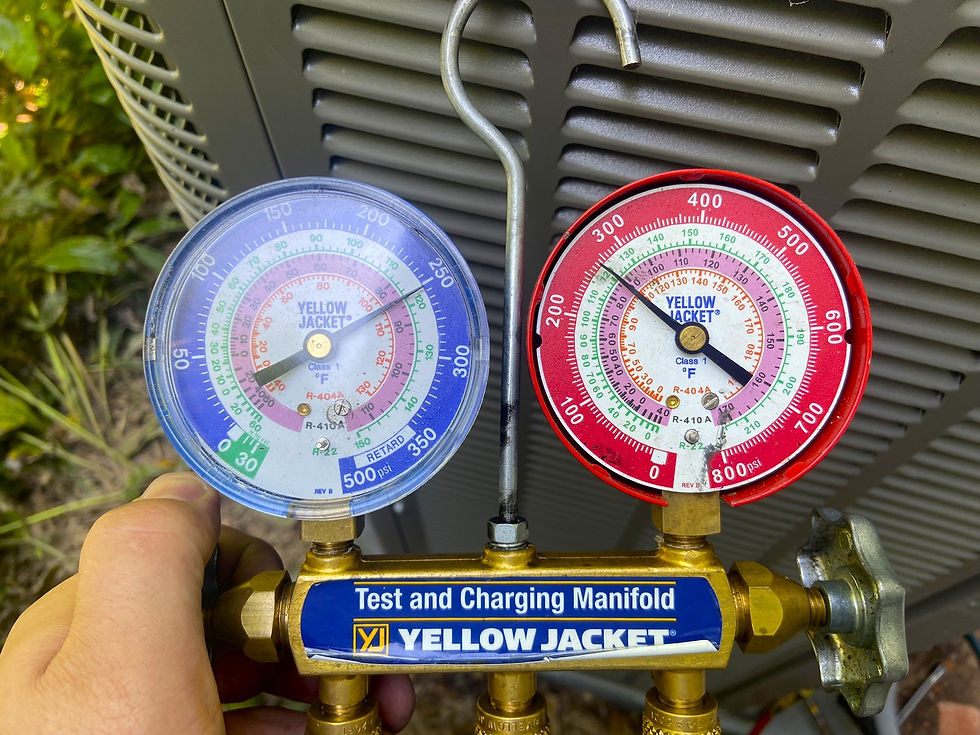CO: The Invisible Killer
- Arianne Large

- Nov 14, 2019
- 3 min read
As the heating season arrives, Helms Heating & Air urges you to keep safety in mind when it comes to heating your home this winter.

What is Carbon Monoxide (CO)?
Carbon monoxide (CO) is known as the "invisible killer" because it is a poisonous gas that is colorless, tasteless and odorless. It is found in the fumes that are produced when you burn fuel (gas, propane, oil, etc.) in vehicles, small engines, stoves, lanterns, grills, fireplaces, water heaters, gas ranges, or furnaces. If any of these items are installed inaccurately, not operating properly, used incorrectly, or not vented per the manufacturer's instructions - carbon monoxide can build up indoors and poison people and animals who breathe it.

Know the Symptoms of CO Poisoning
Carbon monoxide is harmful when breathed because it displaces oxygen in the blood and
deprives the heart, brain and other vital organs of oxygen. According to the Centers for Disease Control and Prevention (CDC), the most common symptoms of CO poisoning are headache, fatigue, dizziness, weakness, upset stomach, vomiting, chest pain, and confusion. CO symptoms are often described as "flu-like." If you suspect CO poisoning, get outside to fresh air immediately and call 911.
Everyone is at risk for CO poisoning. Infants, the elderly, people with chronic heart disease, anemia, or breathing problems are more likely to get sick from CO. Each year, more than 400 Americans die from unintentional CO poisoning not linked to fires, more than 20,000 visit the emergency room, and more than 4,000 are hospitalized.
Heating Safety Tips
Have your home heating systems (including chimneys and vents) inspected and serviced annually by a trained service technician.
Make sure new heating systems are installed by licensed professionals according to the manufacturer's instructions and local code enforcement.
Change your air filter regularly. Once cause of carbon monoxide leaks is a backup of airflow to your heating system.
Never use a gas range or oven for heating your home.
Pay attention to problems that could indicate improper operation (i.e. furnace not adequately heating the home, unfamiliar or burning odor, etc).
What About CO Alarms?
The CPSC recommends every home should have a carbon monoxide (CO) alarm. The United States Environmental Protection Agency (EPA) states that CO alarms are widely available and should be considered a back-up to BUT NOT A REPLACEMENT for proper installation, use and maintenance of fuel-burning appliances. CO alarms are designed to warn you of any unusual build-up of carbon monoxide in your home. If a CO alarm is being installed, make sure the device is certified to the most current Underwriters Laboratory (UL) standard or the International Approval Services (IAS) standard. CO alarms should be installed on each level of the home and outside sleeping areas. They should be tested for correct operation monthly and the batteries should be replaced annually.
Protect your family and yourself from carbon monoxide (CO) poisoning. Start by calling the professionals at Helms Heating & Air Conditioning to schedule routine maintenance for your heating system. The only thing more important to us than your comfort is your safety.
References
United States Environmental Protection Agency, Indoor Air Quality (IAQ), What about carbon monoxide detectors? https://www.epa.gov/indoor-air-quality-iaq/what-about-carbon-monoxide-detectors
Centers for Disease Control and Prevention, Carbon Monoxide Poisoning, https://www.cdc.gov/co/default.htm
U.S. Consumer Product Safety Commission, Carbon Monoxide Information Center, https://www.cpsc.gov/Safety-Education/Safety-Education-Centers/Carbon-Monoxide-Information-Center
United States Environmental Protection Agency, Fact Sheet, Preventing Carbon Monoxide Poisoning, EPA 100-F-09-001, https://www.epa.gov/sites/production/files/2015-08/documents/pcmp_english_100-f-09-001.pdf
U.S. Consumer Product Safety Commission, The "Invisible" KILLER, CPSC-464, https://www.cpsc.gov/s3fs-public/464.pdf



